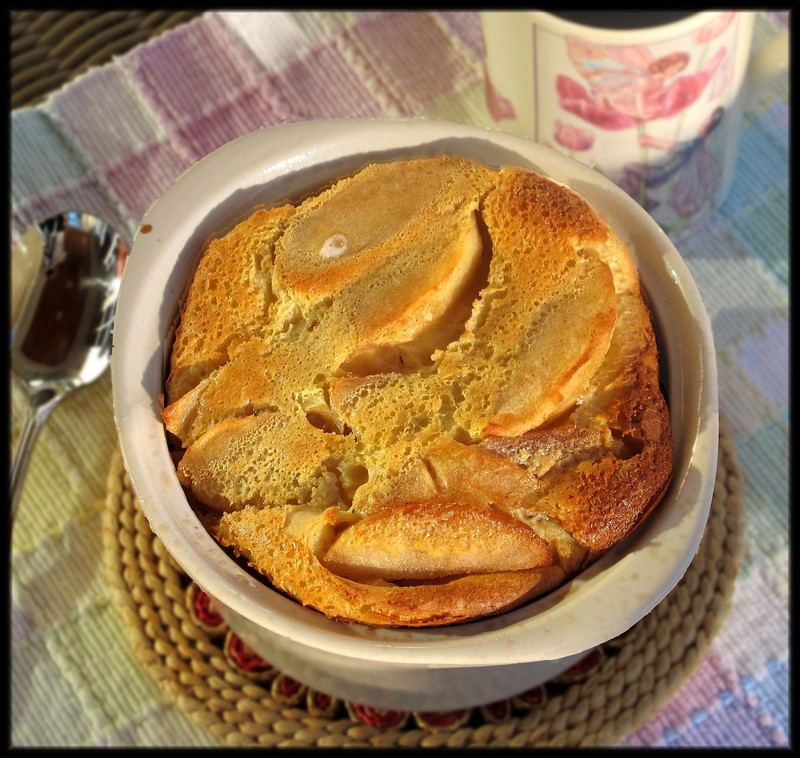Although it’s technically not autumn until we reach the equinox later this month, brisk breezes and a hint of chill in the air have me thinking about apples. And with more than 7,000 named varieties of apples, there’s a great deal to consider. One of the earliest cultivated fruits, apples featured prominently in the diets of the ancient Greeks and Persians. The Romans brought apple cultivation to Europe, and the first settlers in Massachusetts brought apple trees from England.
Johnny Appleseed (born John Chapman in 1774) is credited with the westward expansion of apple orchards, beginning in Pennsylvania and extending as far as Indiana before his death. Apple seeds planted in northwest Washington in the early 19th century were the start of what is now the largest apple-producing region in the country.
With the rich diversity of apple varieties, there are only a handful of types readily available in commercial supply, most notably Red Delicious, Golden Delicious and Granny Smith. These have become popular with consumers because of their recognizable shape and color, and growers appreciate their long shelf life and shipping sturdiness. But when it comes to choosing an apple with the best flavor, look for a Gala, Fuji, Braeburn or Honeycrisp.
No matter which apple is your favorite, try to buy them from a local orchard during peak season, which runs from late August through November. Apples offered for sale the rest of the year have either spent time in cold storage or have been imported from the Southern Hemisphere. The technology behind controlled storage is effective and sophisticated: Computers in airtight rooms maintain reduced oxygen levels, low temperatures and high humidity to keep the apples in pristine condition. You can mimic part of this at home by placing a damp cloth next to the apples stored in the crisper bin of your refrigerator.
Better yet, find a farmer who lets you do the picking, and you’ll discover another benefit. Freshly harvested apples have a natural waxy coating that protects them from moisture loss. When they’re washed at a commercial grower’s packing shed, they lose this protection. To replace this coating, producers apply a thin coat of edible carnauba wax or shellac before crating and shipping the apples. You can tell if an apple has been subjected to excessive heat or moisture before it reached the grocery shelf: The wax will whiten on the skin (like a chocolate bar kept around too long).
For those of you who are curious, there is some truth to the adage about one bad apple spoiling the whole bunch. A bruised or nicked apple releases ethylene gas that will accelerate moisture loss and damage other apples stored nearby. Treat your apples with care and select firm fruits with rich coloring. Avoid any with bruises, soft spots or breaks in the skin. Let taste (or purpose) guide your choice of apple variety: Red and Golden Delicious are sweetest but sometimes mealy; Gala are sweet and juicy; Braeburn and Fuji apples are slightly tart; and Granny Smith are very tart and retain their texture best in cooking.
With a good collection of apples on hand, it was time to think about using them in recipes. One of the easiest to prepare is applesauce, a good destination for Red or Golden Delicious apples.
Their soft texture and sweet flavor cook quickly into a luscious side dish to serve with pork chops or as a replacement for jam to spread on toast with peanut butter. The dish in the photo is called a clafouti, a combination of sautéed apple slices nestled in a tender dough that’s a cross between custard and pastry. Apples are a sweet, crunchy addition to chicken salad or a raisin-studded quinoa salad. Or better yet, find a perfect apple and just take a bite to savor the flavor of autumn.
Clafouti
3 C peeled, sliced Fuji apples
2 T butter
1/4 t cinnamon
1/4 C cognac (optional)
1 1/4 C half & half
1/3 C sugar
3 eggs
pinch salt
1/2 C flour
2 t vanilla
Preheat oven to 350 F. Coat the inside of a 9-inch pie plate with nonstick cooking spray; set aside. Melt the butter in a skillet and add the apples in a single layer. Sprinkle with cinnamon and sauté until slightly golden, turning once. Stir in cognac and set aside. Place remaining ingredients in a blender and combine at high speed for one minute. Pour a thin layer of batter in the prepared pan and bake until set, about 10 minutes.
Remove from oven and arrange apple slices over batter and pour in remaining batter. Bake until puffed and golden, about 45 minutes. Serve warm or at room temperature (it will collapse slightly as it cools).
Applesauce
12 Red Delicious apples
1/2 C orange juice
2 t cinnamon
Core and peel the apples; cut them into chunks. Place apples and remaining ingredients in a large saucepan.
Bring to a boil over high heat; reduce to a simmer and cook, covered, for 15 minutes. When apples are quite mushy, puree in a food processor or with an immersion blender. Serve warm or cold.
Apple Quinoa Salad
2 C cooked quinoa
2 Gala apples
1 t lemon juice
1/2 C raisins
1/2 C apple cider
1/2 C chopped walnuts
3 T rice wine vinegar
3 T olive oil
salt & pepper, to taste
Combine 2 C water with 1 t lemon juice in a medium bowl. Core apples and cut into small chunks; place in bowl of lemon water to prevent browning. Combine raisins and apple cider in a serving bowl and set aside for 15 minutes to plump raisins. Drain apples in a colander and add to bowl with raisins. Stir in cooked quinoa and walnuts. In a small measuring cup, whisk together vinegar and olive oil. Pour over salad and toss to combine. Season to taste with salt and pepper.






















































